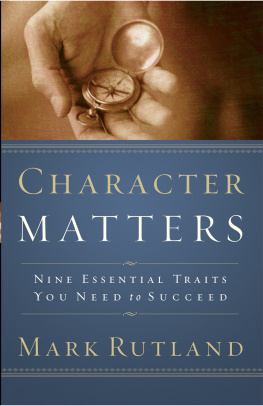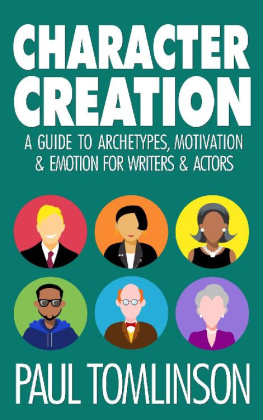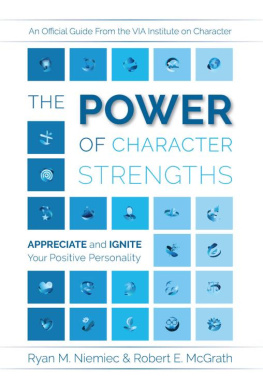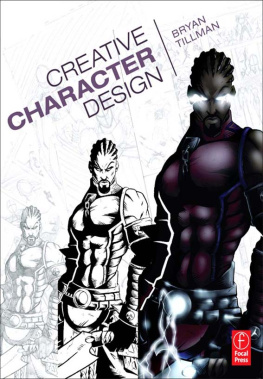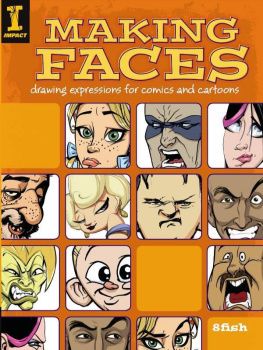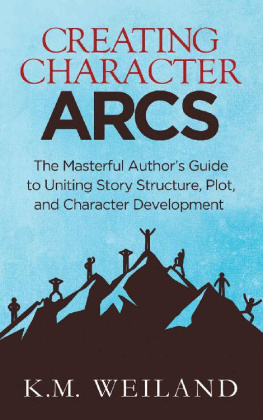Character Mentor Learn by Example to Use Expressions, Poses, and Staging to Bring Your Characters to Life Tom Bancroft

Focal Press is an imprint of Elsevier
225 Wyman Street, Waltham, MA 02451, USA
The Boulevard, Langford Lane, Kidlington, Oxford, OX5 1GB, UK
2012 Tom Bancroft. Published by Elsevier, Inc. All rights reserved.
No part of this publication may be reproduced or transmitted in any form or by any means, electronic or mechanical, including photocopying, recording, or any information storage and retrieval system, without permission in writing from the publisher. Details on how to seek permission, further information about the Publishers permissions policies and our arrangements with organizations such as the Copyright Clearance Center and the Copyright Licensing Agency, can be found at our website: www.elsevier.com/permissions .
This book and the individual contributions contained in it are protected under copyright by the Publisher (other than as may be noted herein).
Notices
Knowledge and best practice in this field are constantly changing. As new research and experience broaden our understanding, changes in research methods, professional practices, or medical treatment may become necessary.
Practitioners and researchers must always rely on their own experience and knowledge in evaluating and using any information, methods, compounds, or experiments described herein. In using such information or methods they should be mindful of their own safety and the safety of others, including parties for whom they have a professional responsibility.
To the fullest extent of the law, neither the Publisher nor the authors, contributors, or editors assume any liability for any injury and/or damage to persons or property as a matter of product liability, negligence or otherwise, or from any use or operation of any methods, products, instructions, or ideas contained in the material herein.
Library of Congress Cataloging-in-Publication Data
Bancroft, Tom.
Character mentor : learn by example to use expressions, poses, and staging to bring your characters to life / Tom Bancroft.
pages cm
ISBN 978-0-240-82071-2 (pbk.)
1. Characters and characteristics in art. 2. Graphic arts--Technique.I. Title.
NC825.C43B355 2012
743.4--dc23
2012003222
British Library Cataloguing-in-Publication Data
A catalogue record for this book is available from the British Library.
ISBN: 978-0-240-82071-2
For information on all Focal Press publications visit our website at http://store.elsevier.com
12 13 14 15 16 
 5 4 3 2 1
5 4 3 2 1
Printed in the United States of America

Introduction
When I started contemplating this book, which I consider a companion book to my first book Creating Characters with Personality , I viewed the subject matter as, Now that you have your character designed, what do you do with it? The concepts that I felt were the next steps in applying to the world of character design were posing, expressions, and staging your characters. Those three subjects easily contained enough content for a book. That was it! I was off to writing my second book!
But how best to address those subjects?
I received positive responses about my Creating Characters book from up-and-coming artists who said they enjoyed the assignments that I ended each chapter with. It gave the artists the ability to apply, on their own, some of the lessons that were taught in that chapter. Additionally, I received many letters from art schools all over the country that have used those assignments as part of their character design class curriculum. That got me thinking about how we, as artists, learn.
Back in 1988, I attended the California Institute of the Arts (Cal Arts), one of the only schools (at the time) that taught traditional character animation. Walt Disney founded it, and many of our instructors were Disney animation artists or artists from other animation studios around the LA area. It was my first taste of having instructors who had practical experience and a master level of ability. The goal of this book is to continue that artistic tradition. Attending Cal Arts was a breath of fresh air but also a very humbling experience. I saw firsthand how a true master draftsmanlevel artist drew and I felt like I had a long way to go.
Several of my instructors had also attended Cal Arts when they were younger. They told us stories of the wisdom and ability of their instructors and how they were passing that knowledge on to us. They described this way of learning as mentoring. It is a way of learning that all craftsmen have used for hundreds of years. A master-level craftsman, someone who has 10 or 20 years of experience in their trade (such as woodworking, metalsmithing, sculpting, gourmet cooking, etc.) would mentor an apprentice or student to train them in the ways of that trade until they were able to make that trade their living and eventually become a master themselves. My first example of this was in my character design class at Cal Arts taught by the incredible Michael Giamo (who later went on to art-direct the film Pocahontas for Disney). Mr. Giamo had a very hands-on way of teaching. He would give out an assignment, show us examples by great artists of the past to illustrate his points, and then assign us to create our art to address the design challenge he presented. When we brought our assignments in the next class, he would review them in front of everyone, discussing the pros and cons of each piece. He always left time at the end of class to allow us to bring our drawings to him and receive one-on-one mentoring from him. For those who asked, he would lay a blank piece of paper over the students drawing and do a quick sketch demonstrating how to improve the drawing. Watching Mr. Giamo draw was like watching magic happen: it was mesmerizing for us young, eager students. It was also, time and again, the moment I would learn a new concept or lesson. Watching a master, like Mr. Giamo, draw over my drawing, then flip back and forth between mine and his was like getting a years worth of art education in a moment. I realize now that the reason I learned best that way was because it was visual. I had struggled with the same assignment and thought through it the best I could. Watching someone with Mr. Giamos experience sit down and quickly sketch out a version I had not even considered was a valuable learning experience. Art instruction should always come down to visual illustration, not solely verbal instruction.
Mentorship as a way to learn was used by Disney animation also. In 1989, when I got my first job in animation at the (then) new Disney Feature Animation in Florida, the studio trained the young artists by having them work alongside experienced mentors. I was fortunate to have animation legend Mark Henn, animator of Ariel in The Little Mermaid , Young Simba in The Lion King , Jasmine in Aladdin , Tiana in The Princess and the Frog , and many others as my mentor for most of my career at Disney. We became good friends, but I never stopped honoring his instruction. Eric Larson a Disney animation legend and one of Walts Nine Old Men of animation had trained Mark. I feel honored to have been trained in the lineage of such incredible artists. It is one of the reasons I write these books: to pass on that knowledge.
Next page

